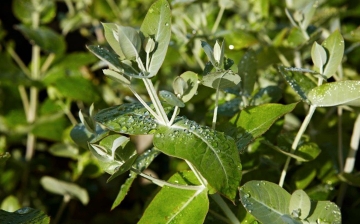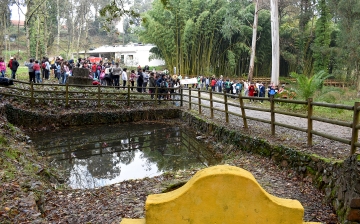Myrtaceae - The Eucalypts family
Eucalypts belong to a large family of plants, called Myrtaceae. This family currently comprises more than 5,000 species (of which around 800 are eucalypts), most with tropical or subtropical distribution and mainly concentrated on the southern hemisphere. Australian flora, for example is dominated by Myrtaceae, with 75 genera (Eucalyptus being the most famous) and more than 1500 species, most of which are endemic.
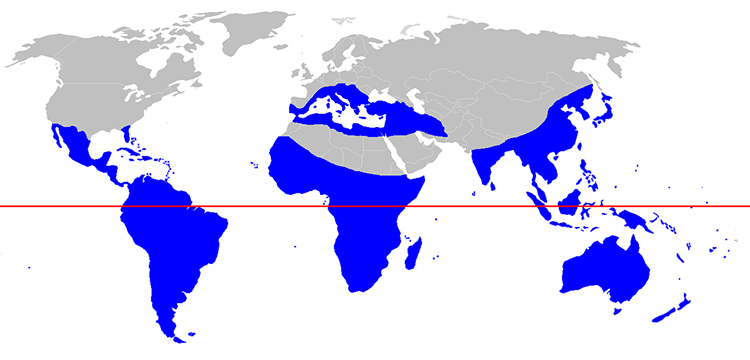
Caption:
Map showing world distribution of the of Myrtaceae family (adapted from Heywood 1996).
Map showing world distribution of the of Myrtaceae family (adapted from Heywood 1996).
In this family besides Eucalyptus, a genus with world-wide forestry importance, which includes the highest flowering plants present on Earth (Eucalyptus regnans), we can also find some known species such as the myrtle (Myrtus communis), the only plant of this family that is native to Europe and serves as a type species for the whole family) or pepper spices (Pimenta dioica and P. racemosa) and cloves (Syzygium aromaticum).
Many tropical fruits such as guava (Psidium guajava), strawberry guava (Psidium cattleianum), feijoa (Acca sellowiana), Suriname cherry (Eugenia uniflora), rose-apples (Syzygium spp.) and jabuticaba (Plinia cauliflora) are also myrtaceae, some still unknown to most Europeans. Also many species used in gardens can also be found in this plant family, such as the bottlebrushes (Callistemon spp.), paperbarks (Melaleuca spp.), pōhutukawa (Metrosideros spp.), tea trees (Leptospermum spp.) and also eucalypts and bloodwoods (Eucalyptus spp. and Corymbia spp.).
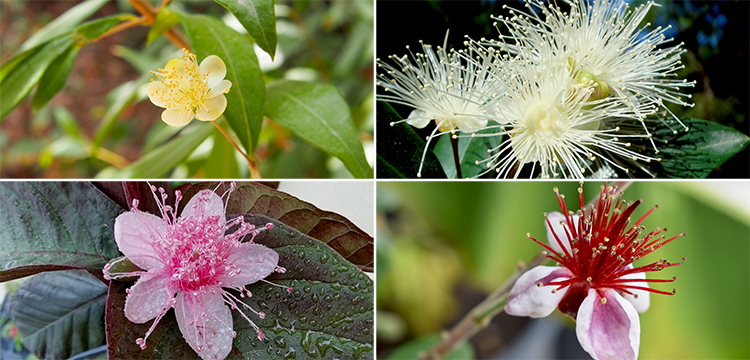
Caption:
Flowers of myrtle (Myrtus communis), the only European mirtaceae and flowers of a species of rose-apple (Syzygium paniculatum), from Australia (above). Flowers of guava (Psidium guajava), and feijoa (Acca sellowiana), both originating in South America (below).
Flowers of myrtle (Myrtus communis), the only European mirtaceae and flowers of a species of rose-apple (Syzygium paniculatum), from Australia (above). Flowers of guava (Psidium guajava), and feijoa (Acca sellowiana), both originating in South America (below).
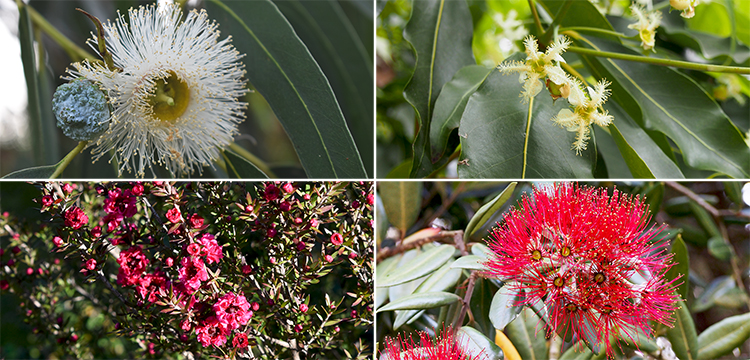
Caption:
Flowers of Tasmanian blue gum (Eucalyptus globulus) and Brisbane boxwood (Lophostemon confertus), both from Australia (above). Flowers of a New Zealand tea tree (Leptospermum scoparium) and pōhutukawa (Metrosideros excels) from New Zealand (below).
Flowers of Tasmanian blue gum (Eucalyptus globulus) and Brisbane boxwood (Lophostemon confertus), both from Australia (above). Flowers of a New Zealand tea tree (Leptospermum scoparium) and pōhutukawa (Metrosideros excels) from New Zealand (below).
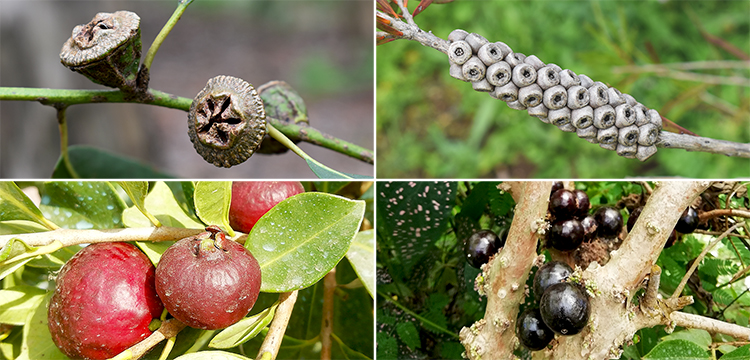
Caption:
Fruits from the two Mirtaceae subfamilies. Capsules from Leptospermoideae, Tasmanian blue gum (Eucalyptus globulus) and bottlebrushes (Callistemon lanceolatus, above). Berries from Myrtoideae, strawberry guava (Psidium cattleianum) and jabuticaba (Plinia cauliflora, below).
Fruits from the two Mirtaceae subfamilies. Capsules from Leptospermoideae, Tasmanian blue gum (Eucalyptus globulus) and bottlebrushes (Callistemon lanceolatus, above). Berries from Myrtoideae, strawberry guava (Psidium cattleianum) and jabuticaba (Plinia cauliflora, below).
At Quinta de S. Francisco there are many species of Myrtaceae, of which stand out dozens of species of Eucalyptus and Corymbia, with many centenary and noteworthy trees.
More articles





